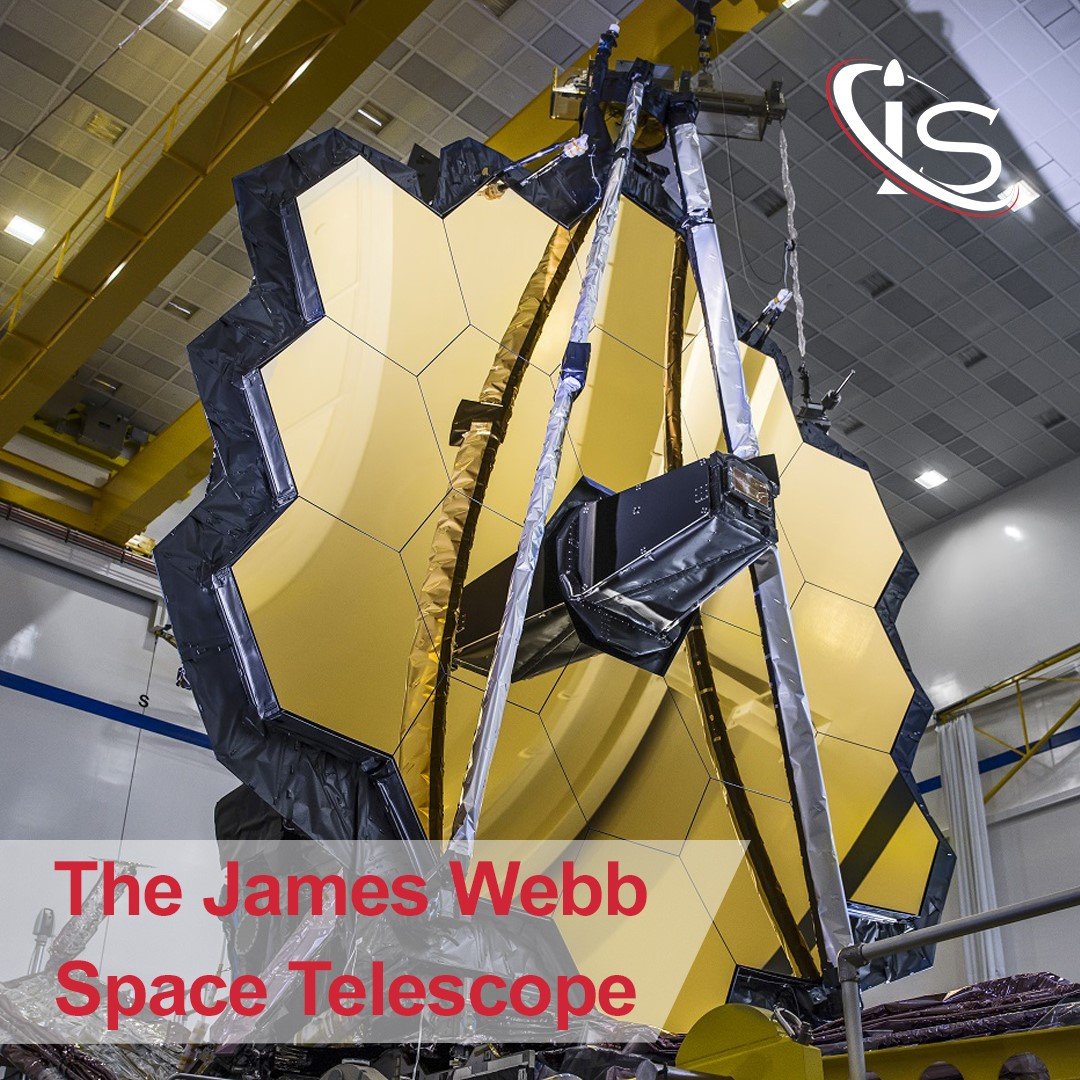Welcome to part 2 of our journey exploring the Hubble Telescope. Last time, it was all about the creation, naming origins, and mission objectives for this emblematic machine. So, it only follows, that today’s discussion will delve deeper into what made Hubble so successful, and how its mission has unfolded throughout the years. From the servicing missions to the eventual end of this telescope, there is a lot to unpack. So, without further ado, let’s get into today’s capsule.
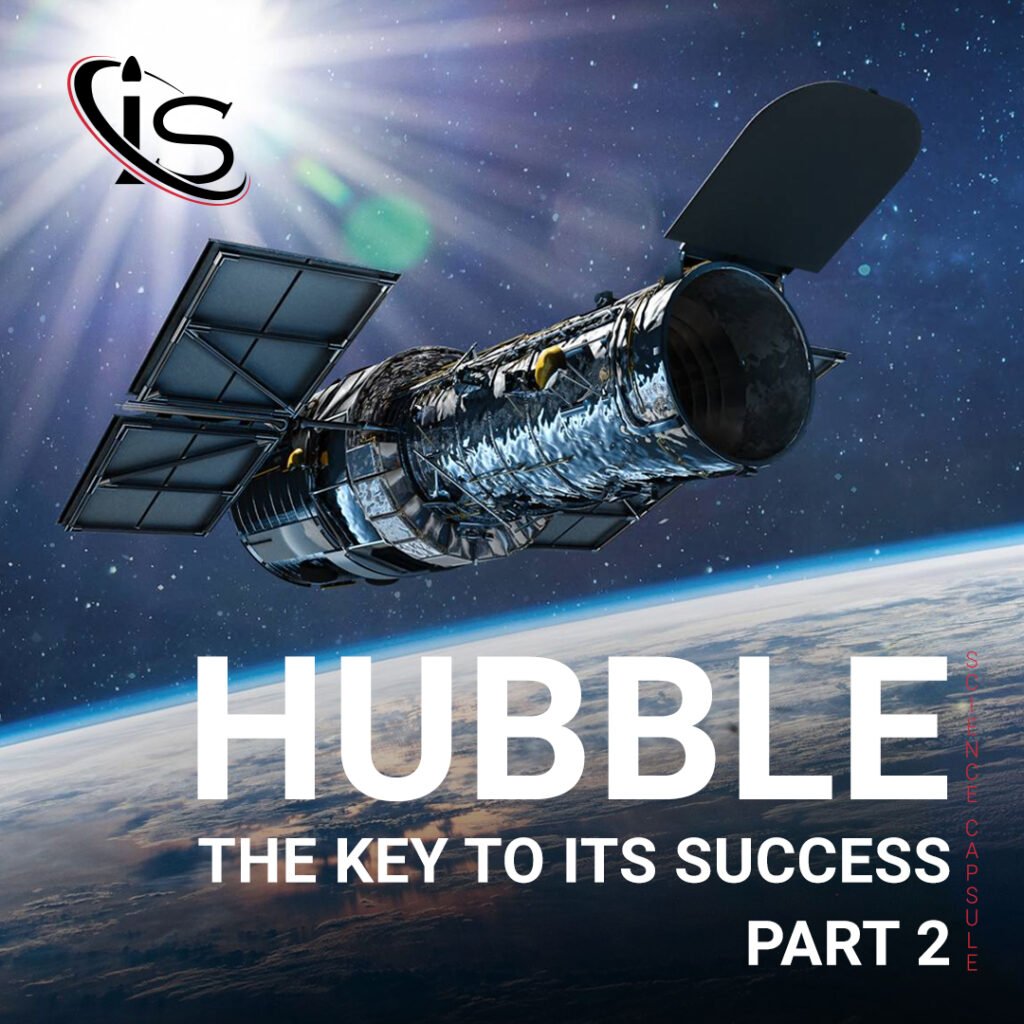
Not the Same Hubble Telescope
One of the most distinctive features for this amazing telescope is its ability to get new equipment while orbiting Earth. Yes, as long-time readers of our blog will already know from the Hubble vs James Webb article (as well as last week’s), Hubble was designed with the intention of its technology improving throughout its life. The way this was achieved through the use of servicing missions. There have been 5 of these in the history of this satellite, so let’s briefly go over each one.
Servicing Mission 1
The first of these missions, known as Servicing Mission 1 (STS-61) occurred between December 2nd and 13th, 1993. Conducted by the crew aboard the shuttle Endeavour, this mission’s main objective was fixing Hubble’s vision. Due to a misshapen primary mirror, up to this point in its journey, Hubble was not able to focus an object into a single point. This led to the images captured by it appearing fuzzy as if they were surrounded by a fuzzy halo.
The fix to this problem consisted in the installation of two new devices. The Corrective Optics Space Telescope Axial Replacement (COSTAR) and the Wide Field and Planetary Camera 2 (WFPC2). These were installed aboard the shuttle Endeavour, after Hubble had been taken into the cargo bay for service. Other than these two instruments, this mission also saw the installment of new solar arrays and gyroscopes.
The significance of this first service to Hubble cannot be overstated. Not only did this fix immediately lead to new discoveries from the telescope — such as the black hole pictured below — but it also proved the efficacy of in-orbit servicing.
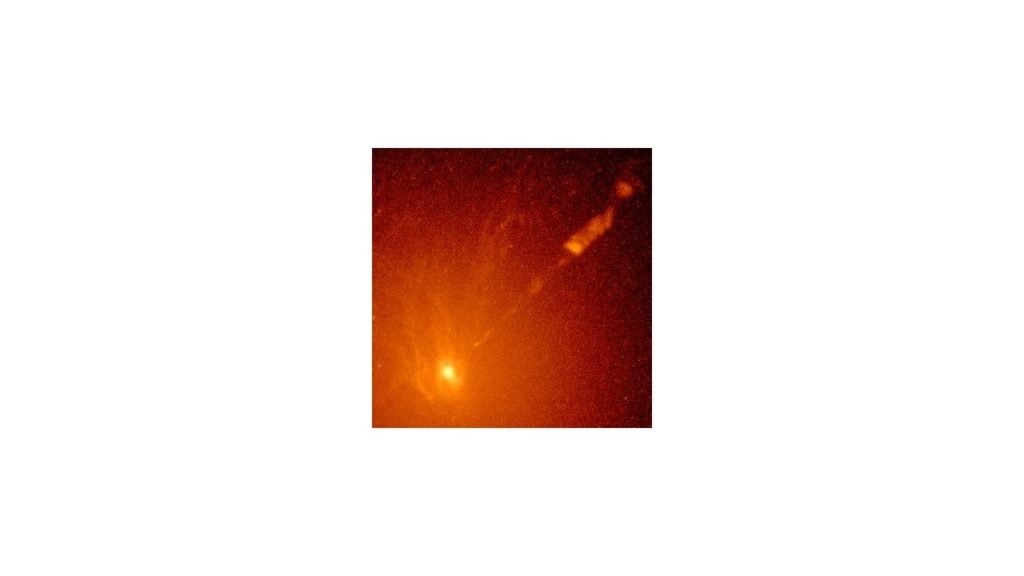
Servicing Mission 2
Less than 4 years later, between February 11th and 21st, 1997, the Hubble telescope received its second in orbit visit. This time, the crew was aboard the space shuttle Discovery. While there was no major visual error to fix, the second servicing mission did provide something invaluable. A way for Hubble to observe distant galaxies whose frequencies had been redshifted by the Doppler Effect. While Hubble may not be as focused on the observation of infrared frequencies as James Webb, its ability to do so is still crucial to its mission.
Therefore, the Near Infrared Camera and Multi-Object Spectrometer (NICMOS) and Space Telescope Imaging Spectrograph (STIS) were installed. The first, as the name suggests, was outfitted purely with the purpose of observing infrared frequencies. The second, on the other hand, was added to better hunt for black holes and take detailed pictures of celestial bodies. They not only both had corrections incorporated for the faulty primary mirror, they replaced two older instruments as well. To be more specific, the Goddard High Resolution Spectrograph and the Faint Object Spectrograph were the ones taken out to make room for these new devices. And before ending this section, here is a picture of Hubble being deployed after the servicing mission.
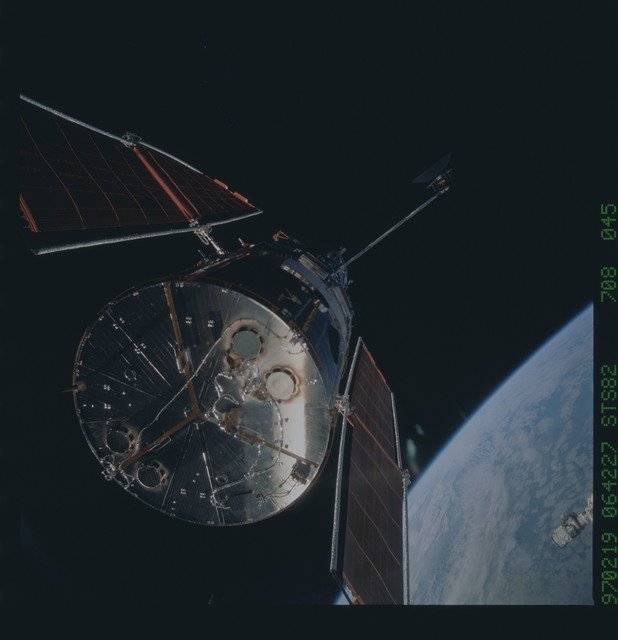
Servicing Mission 3A
Moving to the next mission, and it would take until the end of the one thousands for it to occur. Taking place between December 19th and 27th, 1999, Servicing Mission 3A was the first of a set of two missions upgrading Hubble. The reason behind this was that a third gyroscope had stopped functioning on the space telescope. In fact, before this first mission even took place, a fourth gyroscope started failing, as well. This led to Hubble being placed into safe mode, where the optics equipment would be safeguarded, but the telescope would no longer be able to conduct active observations.
As for the first of the two servicing missions, its main focus was replacing the malfunctioning gyroscopes. The crew performing this service arrived at the telescope via a familiar face: the Discovery space shuttle. Not only were they able to replace all 6 gyroscopes, they also succeeded in replacing 3 of the Fine Guidance Sensors and a transmitter. However, substituting defective equipment was not the only purpose of this mission. The crew of SM3A (Servicing Mission 3A) also installed some brand-new technology, such as an advanced central computer.
Servicing Mission 3B
We now come to the second mission of this two-parter service, SM3B. Taking place between March 1st and 12th, 2002, this mission saw a crew aboard the shuttle Columbia do something that had not been done for years. Install a new piece of equipment. Not only that, but SM3B also marked the first time Hubble got serviced in the new millennium. This — together with its predecessor 3A — marked the beginning of a completely new Hubble.
First off, the Advanced Camera for Surveys (ACS) was introduced, replacing the Wide Field and Planetary Camera 2 (WFPC2). This not only doubled Hubble’s field of view, but it also allowed data to be collected 10 times faster, truly bringing the iconic machine up to speed with modern technology. But that is far from all this mission accomplished. The telescope’s solar panels were replaced with smaller, rigid ones capable of producing 30% more power. A new cooling system was implemented for the NICMOS, which had stopped working in 1999 after depleting its storage of nitrogen ice. Even the Power Control Unit was replaced to better distribute electricity throughout the telescope. In almost every sense of the word, after these two missions, Hubble had been born anew.
Servicing Mission 4
Here we are. We have finally made it to the last of Hubble’s servicing mission, SM4. This final equipment upgrade took place between May 11th and May 24th, 2009. The shuttle used for it was the Atlantis one. Which brings us to the first interesting fact about SM4. You see, originally, this mission was scheduled for the year 2004. However, plans had to change after the space shuttle Columbia was lost. This led to NASA re-examining the situation and risks associated with the mission before deciding to go ahead with it. But go ahead with it they did, leading to the most challenging and complex servicing mission in Hubble’s history.
Hubble Telescope’s Most Challenging Repair
First off, two new pieces of equipment were installed during SM4. They were the Wide Field Camera 3 (WFC3) and Cosmic Origins Spectrograph (COS). The WFC3 actually needed the WFPC2 — which was already somewhat obsolete after the introduction of the ACS — to be removed in order to free up space. Not only does this new camera allow Hubble a much wider field of view, it can also observe three separate frequencies. Near-infrared, visible, and near-ultraviolet. This further improved Hubble’s ability to capture all kinds of celestial bodies and space phenomena.
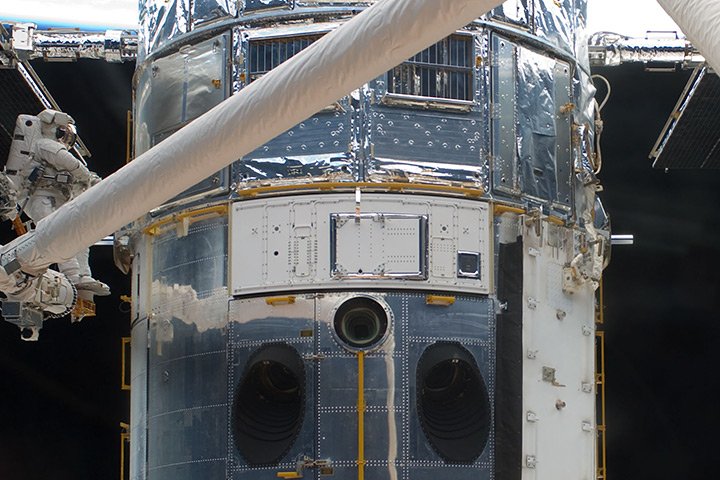
As for the COS, it only observes ultraviolet frequencies. However, it is so fine-tuned for this purpose that it single-handedly improved Hubble’s UV vision by a factor 10 times. A number that actually goes to 70 times when treating distant, faint objects. And just like WFC3 needed something removed to make room for it, COS’s introduction led to the removal of COSTAR. While the latter was introduced to correct for the flawed primary mirror, this function was no longer needed. After all, every new instrument already came with that correction incorporated.
Setting Hubble Up for Even More Success
Another big accomplishment for SM4 was becoming the first in-orbit mission to fix existing Hubble equipment. Both the STIS and ACS had stopped working, in 2004 and 2007, respectively. Fortunately, the Atlantis crew was able to fully repair these two instruments, leaving Hubble with the 5 pieces of equipment it uses to observe the cosmos to this day. And as if all this were not enough, SM4 had even more to it than what we have discussed so far. From replacing batteries, to installing a Fine Guidance Sensor and 6 new gyroscopes, to generally improving Hubble’s spaceflight capabilities, SM4 really did it all. Including installing a backup Science Instrument Command and Data Handling unit after the previous one had malfunctioned in 2008, leading to the use of the previous backup system.
The Hubble Telescope’s End
There is actually one last thing to discuss when it comes to SM4. However, as that has to do with the end of Hubble, I thought it best to leave it for this section. During this last servicing mission, one final tool was installed, known as the Soft Capture Mechanism. The purpose for this is very simple. At some point in the future (hopefully eons from now), when Hubble is at the end of its rope, a robotic spacecraft will attach to it vis the SCM. At that point, Hubble will either be escorted back to Earth or will be released at a higher orbit. That way, it does not stay in its current strategic location, occupying what is very valuable space for the exploration of the skies.
And with that, our time looking into what might very well be the most famous telescope of all time — perhaps second only to Galileo’s — comes to an end. Thank you for joining us in this journey through time and space. If you enjoy this type of content, make sure to check out impulso’s social media pages for all of our posts and updates. “See you” all in the next capsule, right here, at impulso.space.
